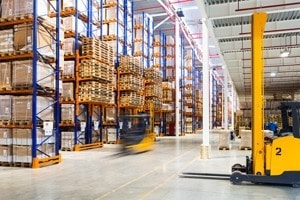Delivery readiness: can orders be handed over within the delivery time?
Consumers and commercial customers are used to always being able to choose from a wide range of products. Longer delivery times are only common to a small extent, and the majority are usually available immediately. However, the processes that run in the background to maintain delivery readiness are extremely complex. After all, they not only say something about the supplier rating, but also about the company’s ability to adequately meet demand.
Definition of delivery readiness: What does this actually mean?
When selecting suitable suppliers, it is not only the price level, product specification or similar that is important – the company’s ability to complete specific orders within a fixed period of time is also considered a success factor. As a result, a high delivery readiness expresses the reliability of the supplier and is a key performance indicator in logistics. A low level of delivery readiness means certain risks that affect both the company-supplier relationship and the company-customer relationship.
Example: A retail company orders a popular item exclusively from supplier A. Customer demand for this product is constantly increasing, and delivery intervals are correspondingly tight. If the supplier is able to deliver the exact quantity in the desired quality on the notified date, this would correspond to a delivery readiness level of 100%. However, as this also involves high storage capacities, which ties up capital, lower values are often considered the optimum benchmark in many sectors.
Calculation: this formula provides information on the degree of delivery readiness
Efficient logistics not only secures the company’s market position, but also enables it to adapt dynamically to changes in demand. In times of e-commerce and the far-reaching digitalization of individual business processes, customer expectations are also rising. This means that prompt delivery also makes an important contribution to high customer satisfaction.
In order to achieve this, a high degree of delivery readiness is aimed for. Various calculation formulas are available, which are more suitable depending on the operation. The most important formulas for calculating delivery readiness are presented below.
- Delivery readiness I (in percent) = number of completed order items / total number of order items x 100
- Delivery readiness II (in percent) = value of completed orders within a period / total value of orders in corresponding period x 100
- Delivery readiness level III (in percent) = number of items delivered on time and in the correct quantity / total number of orders within a period x 100
Important: A look at the individual delivery readiness level provides information on the extent to which delivery backlogs exist or existed in the past. However, the ideal of 100 percent delivery readiness would also trigger a conflict of objectives, as this would result in high storage and inventory costs. An individual assessment is therefore always necessary in order to prioritize certain products or product groups (according to margin, order value, etc.) and to define different target values for delivery readiness.
Advantages of high delivery readiness
Every company must be measured against standards within its own industry that provide information on whether it has a high, low or average delivery performance. Fast, appropriate deliveries are a fundamental part of the business model, especially in the mail order business. A delivery readiness level of 99 percent (target value) is therefore usually set. In other segments, for example in the B2B area, a differentiation can be made on the basis of other factors.
The main advantages associated with a high level of delivery readiness:
- Competitive advantage due to high number of items available for immediate delivery
- Publicly perceived higher service level
- Visible sign of efficient warehouse and logistics structures
Please note: inefficient warehousing is closely linked to low delivery readiness, which is multifactorial with shortage costs, follow-up costs and other aspects.
Strategies to increase delivery readiness in the warehouse
In order to reduce costs and at the same time increase the company’s competitiveness, it is important to increase delivery readiness. The decisive factor here is the degree of “optimum delivery readiness”, which is not necessarily 100 or 99 percent. Particularly important, central products of the company, which represent the basic product range, should have a higher degree of readiness for delivery than secondary or niche products.
The following steps are useful for increasing delivery readiness:
- Set shortage costs and inventory costs in relation to each other
During production, materials are required in the respective quantity on a specific date. If this is lacking, alternatives are necessary, which are associated with higher costs. An analysis of the relationship between the two KPIs is the basis for defining the so-called minimum stock level – equivalent to the safety stock or iron stock.
- Use warehouse management software for optimal inventory management
Digitalized management and control of warehouse capacities enables a differentiated view of processes along the logistics chain.
Further articles on intralogistics, warehouse management systems and warehouse management software can be found in the proLogistik logistics lexicon. It’s worth taking a look!
